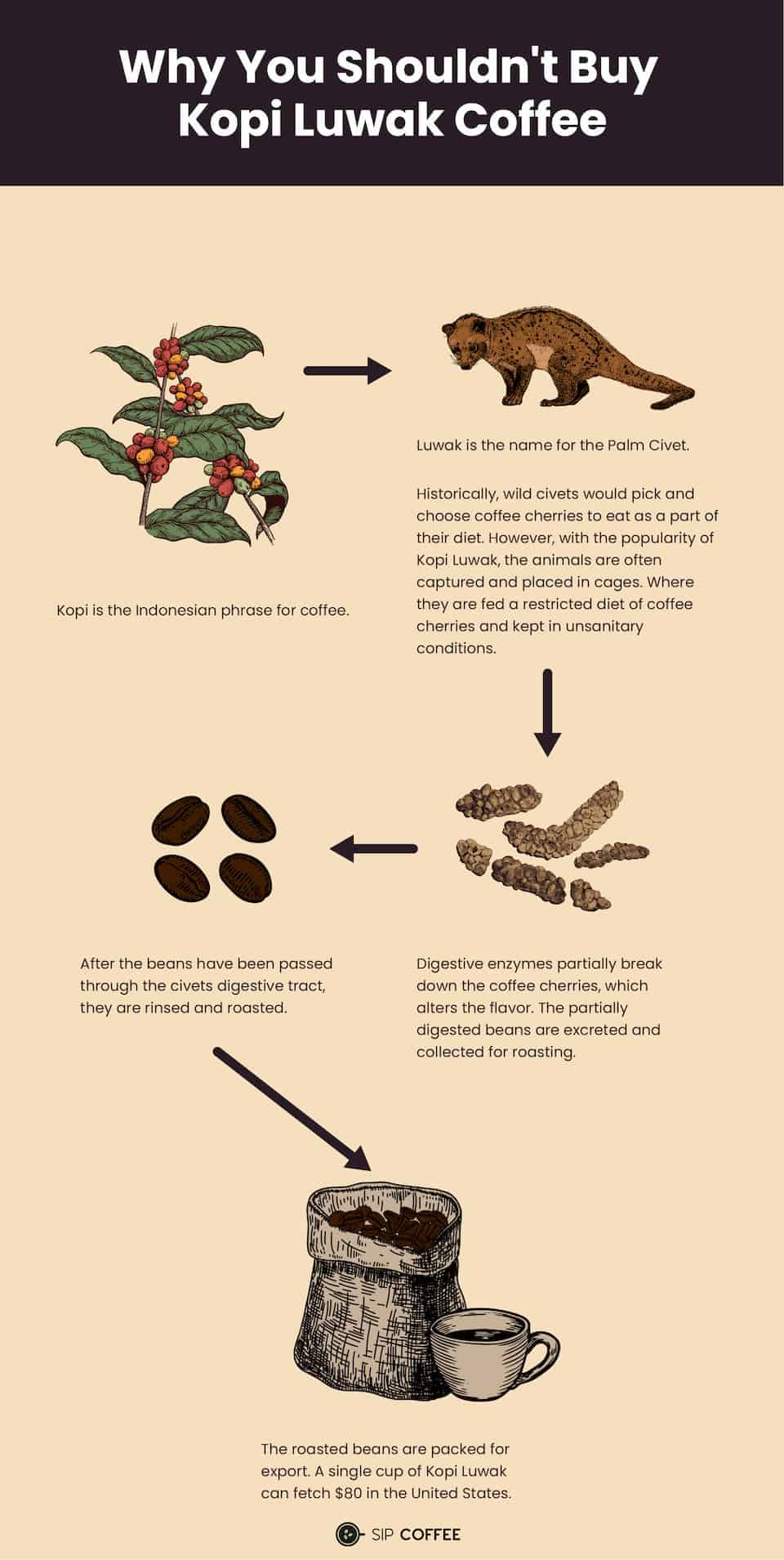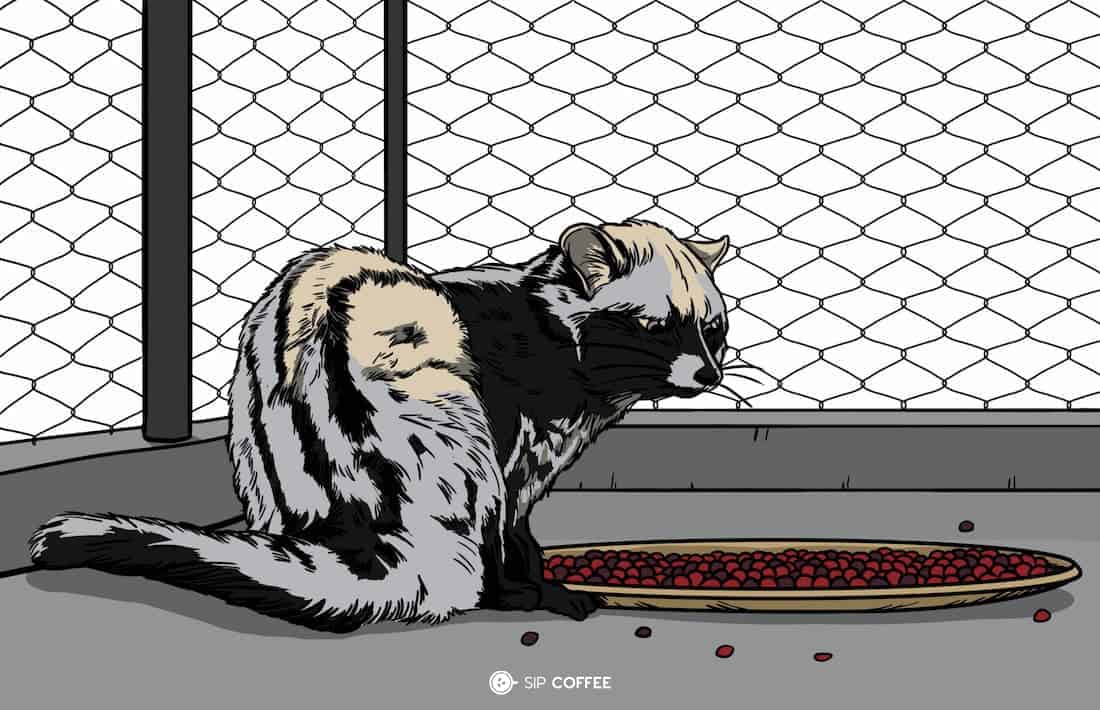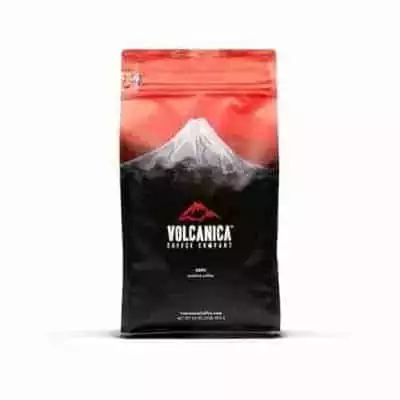Cat Poop Coffee (Kopi Luwak) – What Is It & Why’s It Popular?
Kopi Luwak, also known as cat poop coffee, is a real thing. It’s a product of coffee beans eaten by an animal that looks like a cat. The beans are foraged from its poop and rinsed ready for processing and roasting.
But, where did this practice originate? Why is this particular type of coffee so expensive, even considered super-premium by many? We’re here to clear the air and discuss the popularity of Kopi Luwak, AKA cat poop coffee.
What Is Kopi Luwak Coffee?
Kopi Luwak is one of the most expensive coffee in the world, and a rare variety of coffee. This is because it’s made from coffee beans that undergo a highly unusual kind of coffee processing.
These “premium” coffee beans are produced from the poop of a small mammal called the Asian Palm Civet.

The civet selects and eats only the ripest coffee berries in the wild, but it cannot digest the beans, so it poops out these intact. In the cat’s digestive system, the beans are subject to a set of unique conditions by mixing with digestive enzymes. As a result, the beans become semi-processed and are then excreted out.
The cat poop coffee is then harvested, cleaned, and roasted, ready to be sold worldwide. But where did it originate?
If you’re still interested, then this is the only Kopi Luwak we can ethically recommend. Free-range farmed where the Civets are free to roam and feed as they wish.
How did Kopi Luwak all start?
The story has it that Kopi Luwak tracks back to when coffee production in Indonesia first began in the early 1700s. Dutch colonizers established coffee plantations all over the country as they imported coffee beans from Yemen.
By the 19th century, any produce from these farms was strictly exported by the Dutch to Europe. As a result, the Indonesian farmers who cultivated the coffee cherries couldn’t brew coffee from their harvest..Sucks right?
As these farmers had become accustomed to drinking coffee, they had to become creative in obtaining their caffeine fix. They noticed the intact coffee beans from the poop of the Asian Palm civet and started to forage the beans and roast them.
As time went on, these cat poop coffee beans derived from desperation suddenly became some of the most sought after coffee in the world.
This practice has then spread to other Asian countries like the Philippines and Vietnam, where there is an increasing trade in the cat and coffee beans.
How is Kopi Luwak processed now?
Historically, Civets would roam the jungles at night and eat coffee berries as part of their natural diet. Coffee growers then forage the coffee beans from their droppings.
As Western demand for Kopı Luwak has soared in recent decades, shrewd business people have begun exploiting these nocturnal cats for profit.
Unfortunately, most of the supply for this cat poop coffee is sourced where the civets are bred and caged in captivity. This practice is also prevalent in other Asian countries, including the originating country of Indonesia.
Why Is Kopi Luwak Coffee Popular?
Kopi Luwak was first introduced to the west in 1991 by an individual called Tony Wild, the then head coffee director for Taylors of Harrogate.
Tony imported a single kilogram of Kopi Luwak and informed news outlets of his find, thinking it might pick up local interest. To his surprise, the coffee with cat poop was immediately picked up by the British national media and globally after that.
It was certainly one way to kick up a fuss about cat poop coffee berries, albeit not one he’d imagined.
There are a couple of reasons why Kopi Luwak remains strong in the world of coffee but is it just the power of a good story, or is there a kernel of truth inside this cat poop coffee?
It’s time to cut the crap, so to speak, and separate the myths from accurate information about the most expensive coffee in the world.
Popularized as a rare by-product by Wild Civets
As we mentioned above, kopi luwak is produced from the feces of the Asian palm civet. A key reason for its popularity is the cat’s unique digestive process for the coffee, which leads to a unique flavor and aroma by mixing with digestive enzymes.
Add to the fact that the coffee is incredibly rare, and foraging cat droppings just might sound fine to do for some after all. The expensive cost and exclusivity for many high-paying customers make it the ultimate “bling coffee”.
As there are plenty of specialty coffee varietals worldwide that have complex flavors, is Kopi Luwak’s taste more than enough to justify the demand?
Unique and Prized Flavor Coffees
Proponents for this mystifying cat poop coffee say that the price is worth it for its unique flavor. Civet cat coffee is said to be less bitter than your usual coffee, and it can taste earthy with a mild body. The unique coffee process is the primary factor in giving the civet coffee its taste and aroma.
For experienced coffee lovers, however, it’s a different story. Most of the coffee industry, along with the Specialty Coffee Association, agree that Kopi Luwak just tastes bad.
The primary selling point for cat poop coffee is its downfall. The civet’s digestion process neutralizes and removes the coffee beans’ acidity, and these acidic compounds are essential for a coffee’s flavor and sweetness.
Another point to consider is that few if any regulations for the cultivation of Kopi Luwak exist across the globe.
Seen as a Luxury Brew by some at 80$ a Cup
So if Kopi Luwak doesn’t taste great, why does it still have a reputation for one of the world’s most expensive coffees?
A cup of coffee cat poop costs at least 50$ – 80$ in cities like New York, while a pound of beans ranges from 100$ to 600$. That’s a lot of money just for a small amount of shitty coffee.
The rarity of this coffee bean, the unique processing method, and the tourism surrounding it make it a very expensive brew.
Bali is the most notable for being the home of Kopi Luwak tourism. The locals trade in the beans while some plantations within the area provide tours promising a unique experience with cat poop coffee.
However, there’s a big chance that you’ll be buying a fake bag of cat poop coffee. Kopi Luwak is easy to counterfeit; in fact, it’s estimated that 80% of this coffee sold across the global market are fakes.
And even if it is genuine, there’s the problem of ethics:
Palm Civet Coffee Is No Longer Wild
Initially, it had been a rarity which was available in limited quantities. The fact that a wild civet is fussy about only eating the best coffee cherries had led to a unique taste and flavor of the so-called high-quality coffee.

Nowadays, civets are captured from their jungle home and kept in industrial-sized cages, being fed a diet of only coffee cherries. The practice has been industrialized at the detriment of the so-called coffee poop cat.
It’s inhumane
Indonesia is the geographical home for the Kopi Luwak, and while they have strict regulations for trapping a wild palm civet, this hasn’t stopped poachers from catching these animals.
Often force-feeding them coffee cherries just to keep up with the demand. Unfortunately, this practice is now commonplace in many parts around Southeast Asia where regulations are less extensive and subject to abuse.
Many of these cats are also kept in poor living conditions with little regard for hygiene and diet.
Instead of leading a nocturnal life, many of these civets are paraded in front of tourists and kept in cages for their enjoyment. It’s inhumane and clear that it’s a business practice that plays on the interest of tourists.
A small recent analysis of the problem in Indonesia found that 16 Kopi Luwak plantations in Bali had failed to ensure anima’ welfare, and this certainly isn’t a surprise if you’ve unfortunately seen it first hand.
It’s a profit-generating exercise only
Given the controversies surrounding this coffee mentioned in this article, many unscrupulous people and businesses are unfortunately in the business of selling this expensive coffee poop for a quick buck. Many are thought to brand regular coffee beans even though it’s not Kopi Luwak to improve profits.
Groups like the World Animal Protection organization campaign for retailers to stop the supply of this kind of coffee. It’s hard to say if these campaigns make a noticeable difference as there is currently no way of differentiating a bag of kopi luwak made from a wild civet vs coffee produced from a caged civet.
Summary
We’ve debunked the myths and the real deal is that cat poop coffee doesn’t usually taste good, it’s costly, and animal abuse is rampant in the process. The only gimmick that civet coffee has is its distinctive processing method.
If you’re a true-blue coffee lover, it is highly preferable to go for specialty coffee beans produced in a sustainable manner instead of crappy cat poop coffee. They’re cheaper, more flavorful, and there’s no need to worry about animal welfare concerns.


